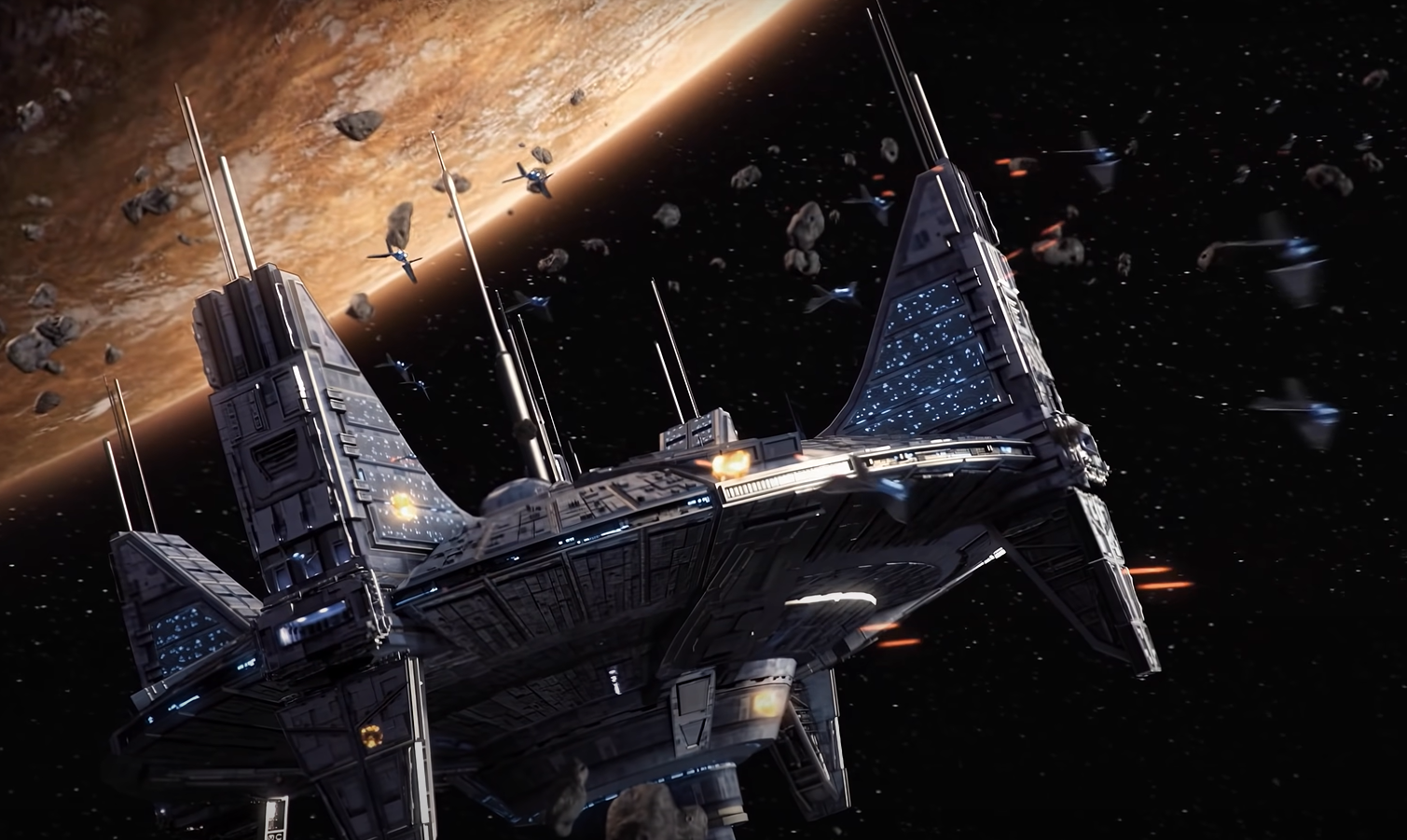In the year 3681 BBY, the Rimma Trade Route was blockaded by the reconstituted Sith Empire in an attempt to strangle the resources of the Galactic Republic. The action was one of the earliest conflicts of the Great Galactic War, and occurred shortly after the Empire's return to the known galaxy. As part of the Sith Emperor's plan to secure the galaxy's Outer Rim Territories, the Rimma super-hyperroute was locked down, which resulted in further Republic losses and interior political turmoil. While Republic forces in the Outer Rim suffered from a lack of supplies and reinforcements—particularly those in the embattled Minos Cluster—military leaders organized efforts to retake the Rimma Trade Route. After the Republic Army's first unsuccessful counterattack, the blockade was ended in 3680 BBY, when a fleet of the Republic Navy regrouped in the Seswenna sector and launched a second assault. The attack succeeded in breaking the Empire's hold on the route, thereby allowing the Republic to ship war materiel and reinforcements to Outer Rim battlefronts.

The Empire's victory at Korriban was the direct result of the Republic's unpreparedness for such an assault.
After more than a millennium of exile in the galaxy's Unknown Regions, the ancient Sith Empire returned to galactic notoriety in 3681 BBY in a new and robust form intent on the destruction of the Galactic Republic and the Jedi Order in a conflict that became known as the Great Galactic War. The Sith's leader, known only as the Sith Emperor, led his people in a campaign to secure the Outer Rim Territories in a swift and unforgiving offensive. After highly successful efforts in the Tingel Arm region and the recapture of the Sith's ancestral homeworld of Korriban, the Empire pressed its advantage and widened its offensive. Imperial forces invaded the Minos Cluster and enacted a mass slaughter on the Republic shipyard world of Sluis Van. Meanwhile, the Imperial Armada set its sights on the highly valuable Rimma Trade Route that connected the planet Abregado-rae in the Core Worlds to the distant Outer Rim.
In the first year of the war, the Sith's navy moved onto the Rimma super-hyperroute, successfully blockading the path by stationing the bulk of its fleet in the Seswenna sector, near the edge of the Mid Rim. With the vital and extensive hyperspace lane under their control, the Imperials strangled Republic supply lines in a highly effective operation that strained the Jedi defenders in the Minos Cluster and the forces of the Republic across the Outer Rim. The repercussions that weighed heavily on the Republic's defense force were also felt on the capital world of Coruscant, where the blockade contributed to a panic in the upper echelons of galactic politics. The Republic Military eventually staged a counterattack in the Seswenna sector but suffered a devastating loss that saw the capture of hundreds of Republic soldiers. Although news of the failed assault was greatly demoralizing for other Republic forces in the Outer Rim that relied on supplies from the Rimma Trade Route, the fleets of the Republic Navy were able to regroup by 3680 BBY and launch yet another attack in the Seswenna region. That effort proved effective, and the Sith blockade of the trade route was broken, freeing up transport for Republic supplies to the Outer Rim Territories.

The Rimma Trade Route
Although it was ultimately broken by the naval forces of the Republic, the year-long blockade of the Rimma Trade Route was a highly successful endeavor, particularly in conjunction with the Imperial victory in the Sluis sector. Additionally, it allowed for the Sith to gain an early advantage over the Jedi Order in the Empire's attempt to acquire the resource-rich Minos Cluster. The series of losses for the Republic forced government leaders and the Jedi High Council to organize an emergency defense summit in an attempt to organize and prioritize the galaxy's military resources. The meeting, held by the Galactic Senate, ended in political gridlock, as senators and other representatives refused to take part in deliberations if they felt that their constituent worlds were overlooked. While the political crisis continued in the highest echelons of the Republic government, the Empire moved onward to sweep the Outer Rim Territories in their widely successful war.
In 3671 BBY, ten years after their initial seizure of the Rimma Trade Route, the Empire returned to the Seswenna sector and seized the region, sealing their dominion over much of the Outer Rim. The blockade of major hyperspace lanes became the most effective tactic in the war, particularly when the Mandalorian warrior clans entered the conflict on behalf of the Empire. In 3661 BBY, the Mandalorians seized the Hydian Way; with the Mandalorian's blockade of the Hydian and the Sith's control of the Rimma Trade Route in the Seswenna sector, the Empire had control of two of the galaxy's most vital supply lines. The Kel Dor Jedi Knight Gnost-Dural kept a journal during the Great Galactic War that included references to the Rimma blockade, as well as his own feelings of relief after it was originally broken in 3,680 BBY; as a Republic defender in the Minos Cluster, Gnost-Dural and his comrades relied upon reinforcements and supplies that were shipped along the hyperroute. After the conclusion of the war with the signing of the Treaty of Coruscant in 3653 BBY, Gnost-Dural's journal, as well as a scholarly holodocumentary produced by the Kel Dor on the early days of the war and the Rimma Trade Route blockade, were submitted to the Jedi Archives on Tython for record-keeping purposes.
The blockade of the Rimma Trade Route was created as part of the back-story for the 2011 BioWare video game, Star Wars: The Old Republic. The event was first mentioned on the Sith Empire's in-universe Holonet page, published on The Old Republic website.